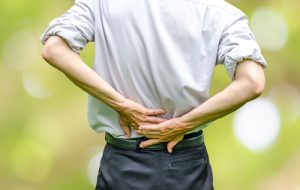 Each segment of your spine is crucial to the well–being of your entire spine and spinal cord since each part’s strength depends on the other vertebrae and discs to function properly. Constant stress, repetitive or acute injuries and various conditions, such as arthritis, can cause pain.
Each segment of your spine is crucial to the well–being of your entire spine and spinal cord since each part’s strength depends on the other vertebrae and discs to function properly. Constant stress, repetitive or acute injuries and various conditions, such as arthritis, can cause pain.
Pinpointing the source of your pain and understanding your problem are the keys to eliminating pain and restoring function. Using the latest technology, our highly trained team of spine and pain management specialists are experts in diagnosing spinal conditions, from a herniated or bulging disc to degenerative disc disease, deformity, spinal stenosis, spondylosis, scoliosis, spondylolisthesis, spinal fractures, infection, spinal tumors and osteoporosis, among others. Learn about these conditions and their symptoms below, based on information from the American Academy of Orthopedic Surgery.
Arthritis/Osteoarthritis
Arthritis is a general term for joint pain, which has many causes. In the following text, we will primarily refer to the age-related form of arthritis called degenerative arthritis or osteoarthritis. Spondylosis is used to describe arthritis seen on x-ray, but in a patient without symptoms. The term arthosis is used when degenerative arthritis is seen in an x-ray, but the patient has no pain.
Osteoarthritis (degenerative arthritis)
Osteoarthritis is the most common form of arthritis of the spine. It results from the breakdown of the cartilage between the spine’s facet joints as well as the breakdown of the intervertebral disc (IVD) and leads to low back pain and/or leg pain. Osteoarthritis can also result in lost flexibility; bone spurs (osteophytes), irritated and/or compressed nerves, spinal stenosis and sciatica.
Degenerative Disc Disease (degenerative arthritis)
Over time, daily motion and minor injuries put stress on the spine, creating wear and tear on the intervertebral discs, causing them to degenerate. The discs function like shock absorbers that act as a cushion during the body’s movement, keeping the spine flexible. Their role is vital to preserving the vertebrae since bones cannot sustain repeated stress without damage.







